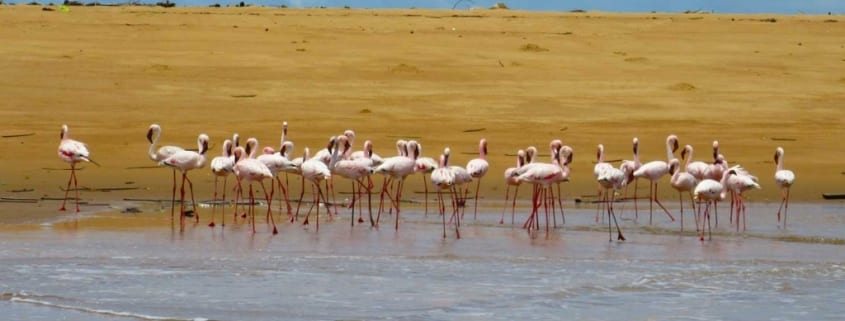Flock to Flamingo Day
Flamingo Day, celebrated on June 23, pays tribute to the plastic lawn decoration created by Donald Featherstone.
Vibrant pink. Elongated neck. Stilt-like legs. These features are as recognizable as a flamingo’s one-foot stance, and served as inspiration for Featherstone’s iconic lawn statues. While the plastic versions are native to front yards across America, the less ornamental birds inhabit a much wider domain.
Flamingos are found in tropical and subtropical regions across the world, including South America and Africa. Though generally non-migratory birds, flamingo flocks are not always permanent due to changes in climate, water levels and food sources.
Their diet gives the birds both their unique hue and their name. Flamingos are born with light gray feathers, but the algae and crustaceans that they eat contain pigments that vibrantly affect their plumage. Because there is a spectrum of pigment levels in their food depending on their environment, not all coloring is consistent; flamingos can range from a bright crimson complexion to a pale pink shade. Regardless of the specific hue, the word “flamingo” is appropriately derived from the Latin term for “flame-colored”.
Because they spend so much time in lakes, swamps and lagoons to find food, the primary threats to flamingos are pollution to their water supplies and degradation of their habitats. By protecting wetlands, Rainforest Trust works to help save the ecosystems that these birds call home. Safeguarding these habitats ensures that when future generations think of fabulous flamingos, they picture the ones with feathers, not plastic.
This Flamingo Day, help save these delightful birds by protecting their tropical habitats.
Header photo: Flamingos in Cameroon. Photo by Dr. Sally Lahm.




